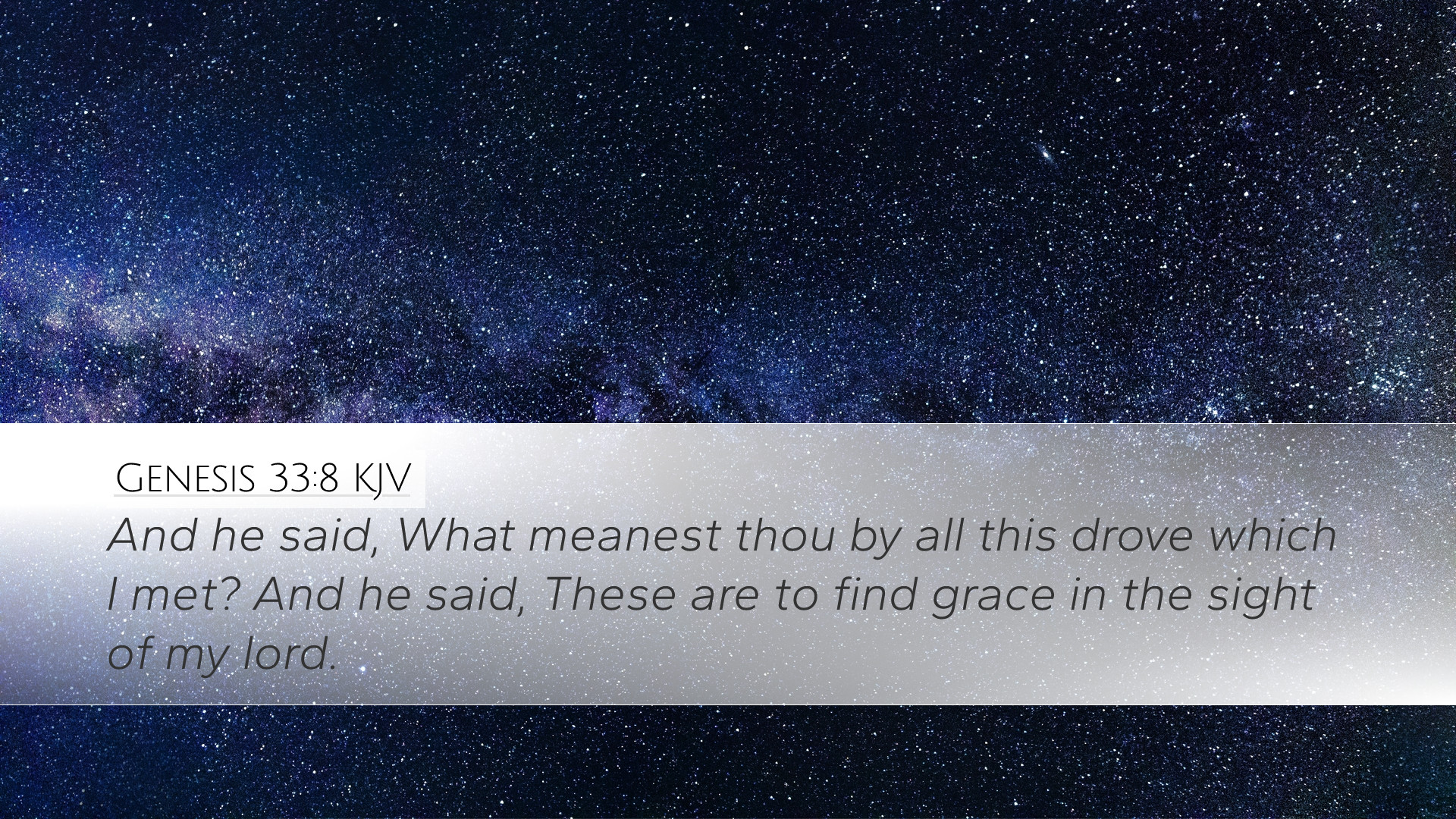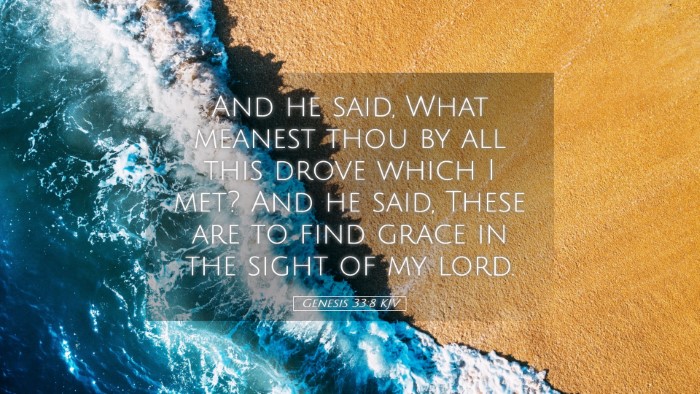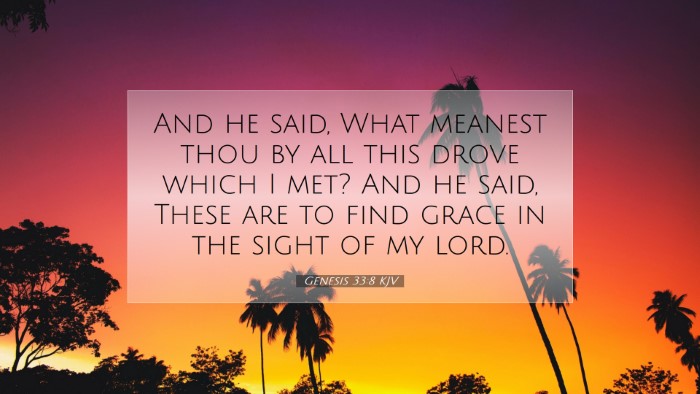Commentary on Genesis 33:8
Genesis 33:8 states, "And he said, What meanest thou by all this drove which I met? And he said, These are to find grace in the sight of my lord." This verse captures a significant moment during the reunion of Jacob and Esau after years of separation and estrangement. The dynamics of their relationship, characterized by past grievances, take center stage as they navigate this encounter.
Contextual Analysis
The narrative of Jacob and Esau is central to understanding the themes of reconciliation and grace in Genesis. Prior to this meeting, Jacob had fled from Esau after deceiving him to gain their father Isaac's blessing. This verse appears in a tense moment where Jacob, aware of his fraught history with Esau, seeks to appease his brother with generous gifts.
1. Jacob's Approach
Jacob's offering of livestock to Esau represents more than mere material wealth; it symbolizes his desire for reconciliation and peace. According to Matthew Henry, Jacob's "drove" of animals was not just a gift, but a demonstration of his humility and recognition of Esau's status as his elder brother.
2. Esau's Response
When Esau inquires about the purpose of the gifts, it is crucial to note the undertones in his question. Albert Barnes highlights that Esau's immediate inquiry reflects suspicion and a desire to understand Jacob’s intentions. This moment is ripe with tension and showcases past wounds, but holds the potential for healing.
3. Themes of Grace and Reconciliation
This verse embodies deeper theological themes of grace. Jacob’s gifts, aimed at finding grace in Esau's sight, indicate a recognition of past faults and a longing for forgiveness. Adam Clarke elaborates that by seeking grace, Jacob acknowledges that the path to reconciliation often involves humility and contrition. His actions suggest a desire to restore not just familial bonds but harmony within the covenant community.
Theological Reflections
The encounter between Jacob and Esau serves as a profound reflection on the nature of grace. Jacob’s plea for grace underscores the human experience of seeking acceptance and restoration after wrongdoing. This theme resonates broadly within the Christian tradition, where grace is seen as an unmerited favor from God.
1. The Role of Humility
Jacob’s gesture is rooted in humility. As noted by Matthew Henry, true humility often precedes reconciliation. Jacob’s recognition of his past faults and willingness to submit to his brother’s authority highlight a biblical principle: humility leads to honor and grace.
2. The Power of Forgiveness
Esau's willingness to accept Jacob's gifts—and by extension, his brother—is indicative of the power of forgiveness. Albert Barnes points out that the act of accepting gifts can symbolize a larger reconciliation, which speaks to a profound spiritual truth: relationships, while strained, can be restored through grace and forgiveness.
3. Anticipating Christ
For Christian theologians, the narrative foreshadows Christ's reconciling work. Jacob, representing humanity, seeking grace from Esau, can be likened to believers seeking grace from God through Christ. Adam Clarke argues that this interaction prefigures the ultimate reconciliation the New Testament narrates in Christ, where God’s grace overflows toward humanity.
Practical Applications
This verse serves as a guide for individuals and communities grappling with conflict. The journey of Jacob and Esau provides several lessons applicable for congregations, pastors, and believers:
- Recognition of Past Mistakes: Reflecting on how past actions affect current relationships.
- Seeking Forgiveness: Approaching those we have wronged with a spirit of humility.
- Acceptance of Grace: Embracing the grace offered to us, both from God and others.
- Building Bridges: Actively working towards reconciliation rather than allowing wounds to fester.
Conclusion
Genesis 33:8 encapsulates a pivotal moment in one of the Bible's most profound narratives of reconciliation. By synthesizing insights from historical commentaries, we uncover rich theological reflections on grace, humility, and the dynamics of forgiveness. As Jacob and Esau navigate their complex history, their encounter invites us to reflect on our own relationships and the grace we extend to others, mirroring the grace we have received through Christ.


